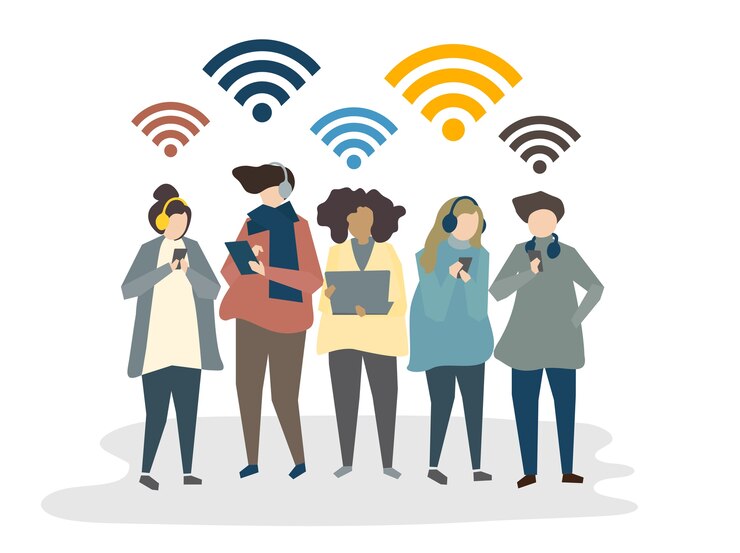Public Wi-Fi networks allow one to stay in connection on the move since one is enabled to access the internet in many institutions such as cafes, airports, hotels, and libraries. The ease of internet access from any point using public Wi-Fi comes at a cost of gigantic security risks. A close look at the risks on the same will be looked at within this blog, after which useful tips on how to maintain the security of personal info while staying connected will be offered.
Public Wi-Fi Risks Explained
1. Man-in-the-Middle Attacks
Risk: Hackers can detect the data transmitted between your device and the Wi-Fi router, which can, in turn, be used to learn usernames, passwords, financial information, and more exploits.
Mitigation: Implement encryption techniques, like HTTPS- Hypertext Transfer Protocol Secure, VPNs- Virtual Private Networks, in protecting your exchanged principles.
2. Wi-Fi Sniffing
Threat: Hackers use some tools that are able to sniff the Wi-fi traffic; collecting un-encrypted data packets; and steals e-mails, history, log-in information, etc.
Mitigation: Avoid logging into sensitive accounts or sharing personal information while using a public Wi-Fi. Use only HTTPS-enabled websites or use the services of a VPN for added layering of encryption.
3. Rogue Hotspots
Risk: A rogue Wi-Fi with the same or similar name of a legitimate Wi-Fi network would be created by the attacker. For example, “Free_Public_WiFi”. On connecting to it in such a scenario, the victim unknowingly ends up exposed.
Mitigation: Ensure staff verifies network names or uses Known Networks, if possible. Turning off autoconnect for WiFi on your devices helps minimize the chance of connecting to a rogue network automatically.
4. Unsecured Devices
Risk: This means anyone else using the same public WiFi could access to your shared drives and folders, or even to devices such as printers, depending upon how you have your device configured.
Mitigation: turning off file and printer sharing as long as you are connected to public networks.
Best Practices When on Public Wi-Fi
1. VPN
Virtual Private Network: VPNs create a secure encrypted connection to the Internet. That encryption keeps your data safe from being intercepted by bad guys lurking on the same pubic Wi-Fi network. Select well known VPN services that utilize robust encryption methods.
2 Enable HTTPS
Secure Websites: Always make sure a website is using HTTPS. The padlock icon will be displayed in your browser’s address bar for encrypting data between your browser and a website during transmission to reduce the chances of its interception.
3. Be Careful about Your Activities
Avoid Transactions: Avoid logging on to sensitive accounts, such as banking or store websites, and never enter personal information on public Wi-Fi, such as passwords or credit card information.
4. Adjust safety settings
Settings of Device Configure your computer to allow its software to update automatically: download security patches and virus definitions that can keep you safe from known vulnerabilities.
5. Protect Yourself
Network Awareness: Knowing one’s surroundings and some risks that exist with public Wi-Fi networks should be in the thought process when connecting. Avoid using networks which have suspicious or generic names in their titles
6. Two-Factor Authentication
Added Layer: In accounts that offer the capability, it will provide two-factor authentication as an added layer, which would require another form of verification other than your password.
Summary
Public Wi-Fi networks are very convenient to stay connected when a person is away from a home or office environment. These also come with security concerns, which many users must mitigate. On this note, learning about the possible risks, in addition to engaging in preemptive security methods in the form of using VPNs, ensuring connections are under the HTTPS, and lastly, resorting to limiting sensitive activity will be a long way in cutting down the risk for people associated with Wi-Fi usage at public hotspots. Vigilance and safe browsing habits remain the finest way to secure intruded private information available today, and scrutiny over mobile connectivity can therefore be said to avoid the compromise of privacy due to connectivity on the go.

